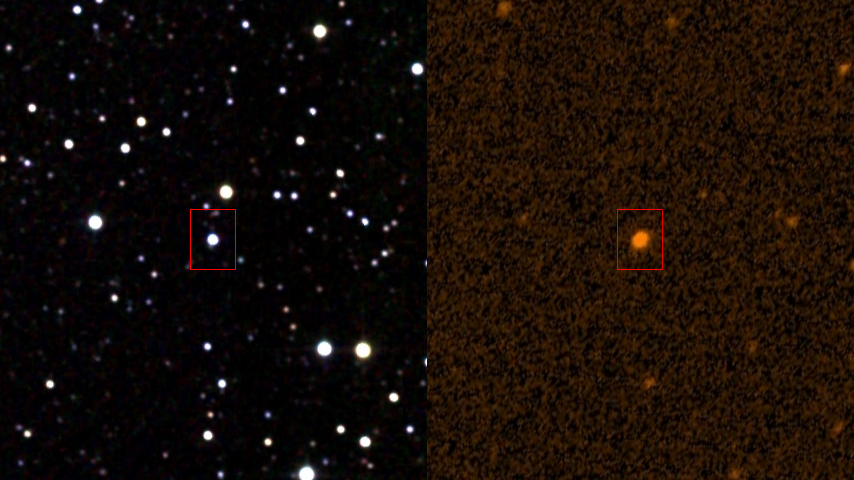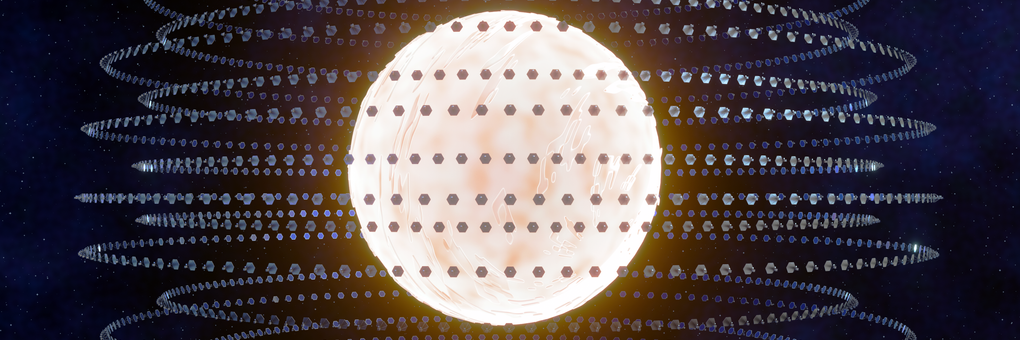Decades ago, a creative astronomer suggested there could be a lot more to the search for alien life than just radio waves.
◊
In 1960, the journal Science published Search for Artificial Stellar Sources of Infrared Radiation, a concise paper by revered astronomer Freeman Dyson. Drawing inspiration from Starmaker, a 1937 science-fiction novel by Olaf Stapledon, he proposed the notion of a gargantuan frame of solar panels around an entire star, a megastructure that became known as a Dyson sphere.
Dyson pitched his namesake spheres as a means by which to search for advanced civilizations rather than an object to discover in and of itself. As fun as a Dyson sphere can be to ponder from a science-fiction author’s perspective, the main purpose of the exercise is to find intelligent life somewhere in the cosmos beyond Earth.
In his famous paper, Dyson outlines why building such a device would be feasible and practical for an advanced civilization with a need to draw on a stupendous amount of power. In the search for Dyson spheres -- and the species who create them -- it would help to understand better how they would work and how to spot them.
Did a radio telescope in Ohio detect a signal from aliens? Find out by watching this intriguing MagellanTV documentary.
What Exactly Is a Dyson Sphere?
Imagine a megastructure whose sole purpose is to meet the needs of a spacefaring civilization by harvesting as much power from their star as possible. This engineering marvel would be composed almost entirely of floating solar panels, all of which would face the star at different angles. The panels would be both isolated and mobile enough to avoid debris or falling into the star, and they would have to be situated at least tens of millions of miles from the star to avoid melting.
How much power could a Dyson sphere’s solar panels realistically generate? Well, because such a small fraction of the sun’s solar power actually reaches Earth, we receive no more than 44 quadrillion of the 380 billion quadrillion watts the Sun produces per second. A massive array of solar panels wrapped around a star, however, would allow for much more surface area, generating massively more wattage than any solar power plant on Earth.
But even if the construction of a Dyson sphere were theoretically possible, what would an advanced civilization need in order to build such a behemoth? As you can imagine, the main hurdle would be resources. Just to gather enough materials for the structure, the civilization would have to excavate the equivalent of an entire planet, perhaps one as large as Jupiter. Gradually, as the civilization gathered more of the necessary resources, it would construct more and more solar panels. Over centuries, clusters would become rings, the rings would become multiple rings, and so on until all energy needs were met.
The Dead Space game franchise illustrates the challenge of resources by imagining a future in which we humans “mine” celestial dwarfs and asteroids with starships called “Planet Crackers.”
Searching for Dyson Spheres?
How do astronomers look for such enormous signs of super-advanced civilizations? For starters, they use the world’s most powerful telescopes to identify unusually dim stars. Then, they must rule out all kinds of natural phenomena that might account for stars’ dimness. These include moribund companion stars, gas clouds, or even distant pockets of darkness that emit infrared radiation but no visible light.

Ultraviolet and infrared images of Tabby’s Star (Source: NASA, via Wikimedia Commons)
The search for Dyson spheres has led to a couple dozen false alarms, the most famous of which is Tabby’s Star. In a 2015 scientific paper, Tabetha “Tabby” Boyajian discusses her investigation of the peculiarly twinkling star, KIC 8462852. She and fellow astronomers eventually abandoned the exciting idea of a Dyson sphere in favor of more common possibilities, one of which might have been “an older, but violent solar system, where planets crash together and leave large amounts of debris around their star.”
Even if an advanced civilization is out there somewhere, we must also remember that a Dyson sphere may not be the way advanced beings power their empires. (If people of centuries past wanted more power, they’d ask for more coal!) Of course, if we do see a Dyson sphere someday, we’ll definitely have a few ideas of what to expect from that corner of the galaxy.
Ω
Title Image: A representation of a Dyson sphere (Source: Wikimedia Commons)


